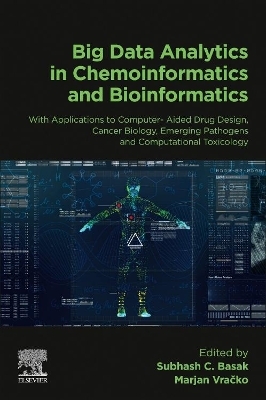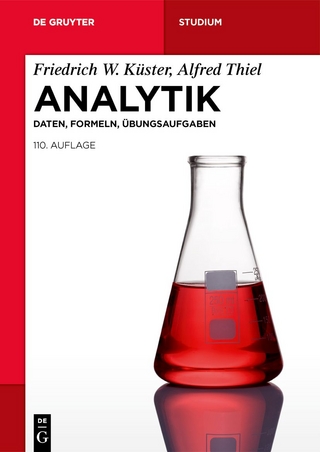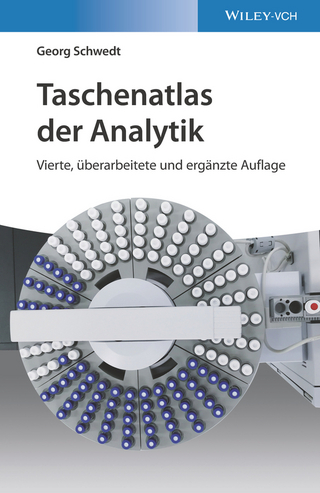
Big Data Analytics in Chemoinformatics and Bioinformatics
Elsevier - Health Sciences Division (Verlag)
978-0-323-85713-0 (ISBN)
Here, an international team of leading experts review their respective fields and present their latest research findings, with case studies used throughout to analyze and present key information.
Dr. Basak is an adjunct professor in the department of chemistry and department of biochemistry & molecular biology at the University of Minnesota Duluth. He received his Ph.D. in Biochemistry from the University of Calcutta in 1980. He is a member of several academic societies, including International Society for Mathematical Chemistry, of which he is President, and is a US Chair in the organization of thirteen international mathematical chemistry workshops in USA, South America, and various universities/ research institutes in India. He was awarded ARA Journal Best Paper Award, American Romanian Academy of Arts and Sciences (2004) and Statistics in Chemistry Award, American Statistical Association (2004). is senior researcher at Kemijski Inštitut/National Institute of Chemistry in Ljubljana, Slovenia. Since 1994 his research has been focused on QSAR (quantitative structure-activity relationship) modelling of biological/toxical properties of compounds, to quantum chemistry, to chemometrics (numerical analysis of proteomic and genomic data) and to modeling of interaction between receptors and molecules. He obtained his PhD (1990) from University of Erlangen, FR Germany in the field of quantum chemistry. Later on, he was a post doc at the Columbia University of New York and at the University of Namur, BE (Faculté Universitaire Notre Dame de la Paix, Namur). In 1994 he joined the National Institute of Chemistry in Ljubljana. In 2005 he was senior visiting researcher at the Joint Research Centre of European Commission, Ispra where he worked on applications of (Q)SAR methods for regulatory purposes. He is author of 85 scientific papers and chapters
GENERAL SECTION:
CHEMOINFORMATICS AND BIOINFORMATICS BY DISCRETE MATHEMATICS AND NUMBERS: An adventure from small data to the realm of emerging big data
Robustness Concerns in High-dimensional Data Analysis and Potential Solutions
The Social Face of Big Data: Privacy, Transparency, Bias and Fairness in Algorithms
CHEMISTRY & CHEMOINFORMATICS SECTION:
Integrating data into a complex Adverse Outcome Pathway
Big data and deep learning: extracting and revising chemical knowledge from data
Retrosynthetic space persuades by big data descriptors, by Claudiu N Lungu
Approaching history of chemistry through big data on chemical reactions and compounds
Combinatorial Techniques for Large Data Sets: Hypercubes and Halocarbons
Development of QSAR/QSPR/QSTR models based on Electrophilicity index: A Conceptual DFT based descriptor
Pharmacophore based virtual screening of large compound databases can aid "big data" problems in drug discovery
A New Robust Classifier to Detect Hot-Spots and Null-Spots in Protein-Protein Interface: Validation of Binding Pocket and Identification of Inhibitors in in-vitro and in-vivo Models
Mining Big Data in Drug Discovery – Triaging and Decision Trees
BIOINFORMATICS AND COMPUTATIOANL TOXICOLOGY SECTION:
Use of proteomics data and proteomics based biodescriptors in the estimation of bioactivity/ toxicity of chemicals and nanosubstances
Mapping Interaction between Big spaces; active space from Protein structure and available chemical space
Artificial Intelligence, Big Data and Machine Learning approaches in Genome-wide SNP based prediction for Precision Medicine & Drug Discovery
Applications of alignment-free sequence descriptors (AFSDs) in the characterization of sequences in the age of big data: A case study with Zika virus, SARS, MERS, and COVID-19
Scalable QSAR Systems for Predictive Toxicology
From big data to complex network: a navigation through the maze of drug-target interaction
Dissecting big RNA-Seq cancer data using machine learning to find disease-associated genes and the causal mechanism
| Erscheinungsdatum | 06.12.2022 |
|---|---|
| Zusatzinfo | 300 illustrations (40 in full color); Illustrations |
| Verlagsort | Philadelphia |
| Sprache | englisch |
| Maße | 152 x 229 mm |
| Gewicht | 450 g |
| Themenwelt | Naturwissenschaften ► Chemie ► Analytische Chemie |
| ISBN-10 | 0-323-85713-2 / 0323857132 |
| ISBN-13 | 978-0-323-85713-0 / 9780323857130 |
| Zustand | Neuware |
| Informationen gemäß Produktsicherheitsverordnung (GPSR) | |
| Haben Sie eine Frage zum Produkt? |
aus dem Bereich


